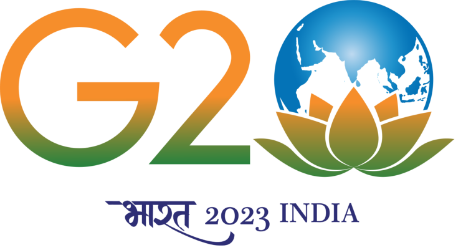The Innovation Sutras | Impact creates impact! (Sutra 5)
- 21st Sep 2023
-
India Today
An IIT Madras professor explains how embracing boredom, setting clear missions, and harnessing impact can transform everyday challenges into innovative solutions.
Authored By: Prof. Prabhu Rajagopal
Authors and poets experience a 'writer's block' that curtails their creative outputs for long periods of time, sometimes even lasting up to several years, requiring special efforts to break past.
Many other creative professionals also face the equivalents of this phenomenon that are perhaps a psychological reaction to the routine, mundane and quotidian nature of most such work at the start.
ASTRONOMY AND INNOVATION
Within the scientific community, the work of Danish astronomy pioneer Tycho Brahe has long been admired for his pathbreaking effort in cataloguing the motion of planets and mapping the positions of stars in the sky.
Brahe's observations of the motion of Mars later helped the German astronomer Johannes Kepler to formulate the laws of planetary motion.
These developments revolutionalised physics, providing support to the Heliocentric model of our solar system and ultimately leading to Isaac Newton formulating his laws of motion which till today form the basis of most of our engineering advancements.
Yet, the bulk of Brahe's work was in painstakingly collecting information on the movement of celestial objects in the sky, night after night, in seclusion from the 'outside world' over a lifetime.
DATA COLLECTION: A HUMBLE BEGINNING
Much of the work at the start of many scientific and technological developments consists in data collection, generation and analysis, a task that is the quagmire of many would-be scientists and scholars at the start of their careers.
One of the ways in which the psychological recoil to boredom from such work, is to have a clear understanding of the goals and impact of the effort being undertaken.
THE POWER OF CLEAR MISSIONS
In the face of a severe crunch in knowledge-base in crucial areas such as cryogenics and international embargoes on sharing technology and expertise to India in several domains, the Indian Space Research Organisation (ISRO) successfully and indigenously developed its own set of launch vehicles, riding the success of which today we have the awe-inspiring moon and sun missions.
India's space programme is unique across the world, for its focus on solving everyday challenges such as predicting rainfall for aiding agriculture and studying weather patterns to prevent catastrophic loss due to natural disasters.
For example, advanced models that leverage satellite-based observations and predict cyclones well in advance have mitigated the disastrous effects such events have had in the past.
The stories of our defense and nuclear programmes are similar, yielding several dual-use solutions, while also driving self-sufficiency for domestic energy and security needs, such as in prosthetics and electronics.
Among everyday cases, examples such as the Green Revolution, the Milk Revolution and even the Delhi Metro, show that when tasked with a clear mission and understanding of the impact, we can overcome enormous challenges and carry past the dying of the initial inspiration.
At IIT Madras' Centre for Innovation, the competition teams working on themes such as electric and solar-powered racing vehicles, extra-terrestrial autonomous vehicles and rovers, Hyperloop and sounding rockets have achieved incredible feats on shoestring budgets and with marginal support, thanks to the well-digested understanding of the impact made possible by multi-student-generational efforts.
IMPACT CREATES IMPACT
This brings us to the next Sutra -- Impact creates impact (Sutra 5)
Impact is a feedback loop. While not all projects can afford the ignition and inspirations provided by grand motives and challenges, even finding little impacts that can be delivered meaningfully can circle back to motivate further innovation.
For example, even the simple exercise of presenting findings to colleagues at scientific conferences and gaining appreciation from peers can catalyse young researchers.
This is also further illustrated in the evolution of one of the projects close to the author's heart, the development of the HomoSEP robot for mechanised cleaning of septic tanks and sewer manholes at his laboratory.
THE HOMOSEP REVOLUTION
What was at the start of the pandemic just a technological dream to create a customised and scalable robotic solution to eliminate the demeaning practice of manual scavenging, has today developed into a functional and integrated solution deployed at over 20 locations across India.
The author is witness to how interactions with sanitation workers and field visits fundamentally transformed the research team's outlook and fired up their motivation to develop a solution that will work in the tough practical conditions than merely a laboratory demonstration.
Bhavesh Narayani, an MS alumnus from the author's laboratory and now the technology lead for HomoSEP at Solinas the acclaimed startup piloting this solution, comments: "The successful testing of the simple but mechanised blade homogenizer system for septic tanks ignited my drive to develop an end-to-end solution for eradicating manual scavenging in septic tanks and sewer manholes."
"My interactions with safai workers and understanding their expectations deeply moved me to innovate further," he says.
"Today, HomoSEP is on a vehicle-mounted system that integrates homogenization, suction, storage, and camera-based control functionalities, built as per their specifications and needs," Bhavesh Narayani adds.
We will conclude the sutras on the 'generation' phase of innovation in the next article which discusses the value of working across boundaries. This series will then discuss further sutras on growing and nurturing an innovation culture in organisations.
(Article by Professor Prabhu Rajagopal, Faculty in-charge, Centre for Innovation (CFI), IIT Madras; recipient of prestigious early career awards including the IEI-National Design Award, and the National Swarna Jayanti Fellowship)

